Table of Contents
Introduction
Artificial Intelligence (AI) has traditionally been a field reserved for the technically adept, requiring knowledge of complex programming and data science. However, this dynamic is shifting rapidly with the advent of no-code AI platforms. These tools herald a transformative era where AI is becoming accessible to students, small business owners, entrepreneurs, educators, and trainers—irrespective of their technical background.
There is a palpable excitement around the democratization of AI through these no-code solutions, which empower users with intuitive interfaces and drag-and-drop functionalities to build, deploy, and automate AI models. This evolution not only paves the way for innovation but also for inclusivity, as it ushers in a diverse group of users who can now harness the power of AI to fulfill personal, academic, or business objectives without the need for extensive coding knowledge.
As we stand at this crossroads of technological empowerment, it's essential to sift through the rapidly expanding market to identify the most effective and user-friendly no-code AI tools. These platforms not only save time and resources but also open up new avenues of creativity. From business analytics to customer service enhancements, no-code AI tools are enabling a variety of applications that were previously out of reach for many.
Our exploration here is aimed at unveiling a curated list of the top no-code AI tools that stand out for their ease of use, versatility, and transformative capabilities.
Democratizing AI: What Are No-Code AI Tools?
TLDR
No-code AI tools are the engines driving AI democratization. They provide a means for non-technical users to leverage the power of AI, minimize the learning curve, and ignite a wide range of applications, fostering a culture of innovation that is both inclusive and diverse. These platforms are not just removing obstacles; they are creating pathways for all to participate in the AI revolution.
Artificial Intelligence is experiencing a paradigm shift, one where the exclusivity associated with AI's intricate programming is dissipating. Enter no-code AI tools—revolutionary platforms that empower individuals across various sectors with the capability to operationalize artificial intelligence without writing a single line of code. But what exactly are these tools, and how do they enable such broad-spectrum democratization of AI?
At their core, no-code AI tools are software solutions that provide graphical user interfaces for the creation and deployment of AI models. These interfaces are designed to be user-friendly, often incorporating simple drag-and-drop operations, allowing users to visually design AI-based workflows. This approach greatly simplifies AI development, making it accessible to those who lack traditional programming expertise. For example, Google's Teachable Machine offers an intuitive platform for training machine learning models, bringing AI within the grasp of educators and students.
Additionally, no-code AI platforms break down barriers to entry by abstracting the complexities of machine learning algorithms, data pre-processing, and model training into manageable, user-focused experiences. By providing templated solutions for common AI tasks, such as data analysis and predictive modeling, tools like DataRobot and Obviously AI are rapidly accelerating the deployment of AI models across various industries, from healthcare to finance.
The impact of no-code AI extends beyond mere convenience—it catalyzes innovation. With AI now a tool in the non-programmer's toolkit, small business owners can harness predictive models to forecast sales, teachers can introduce AI concepts in the classroom without the steep learning curve, and entrepreneurs can quickly prototype AI-driven products. The adaptability and broad applicability of platforms like Microsoft Lobe underscore the inclusive future of AI technology, where creative solutions are not restricted by technical know-how.
Importantly, no-code AI tools are not a one-size-fits-all solution; they offer a spectrum of customization levels, enabling users to fine-tune AI models to meet specific needs. Take Akkio, which streamlines AI for business workflows, or RunwayML, which opens up AI's creative potential for artists and designers, each tool varies in the degree of user engagement and complexity they offer.
Here are 7 key no-code tools to check out:
Amazon SageMaker: Cloud-Based Machine Learning
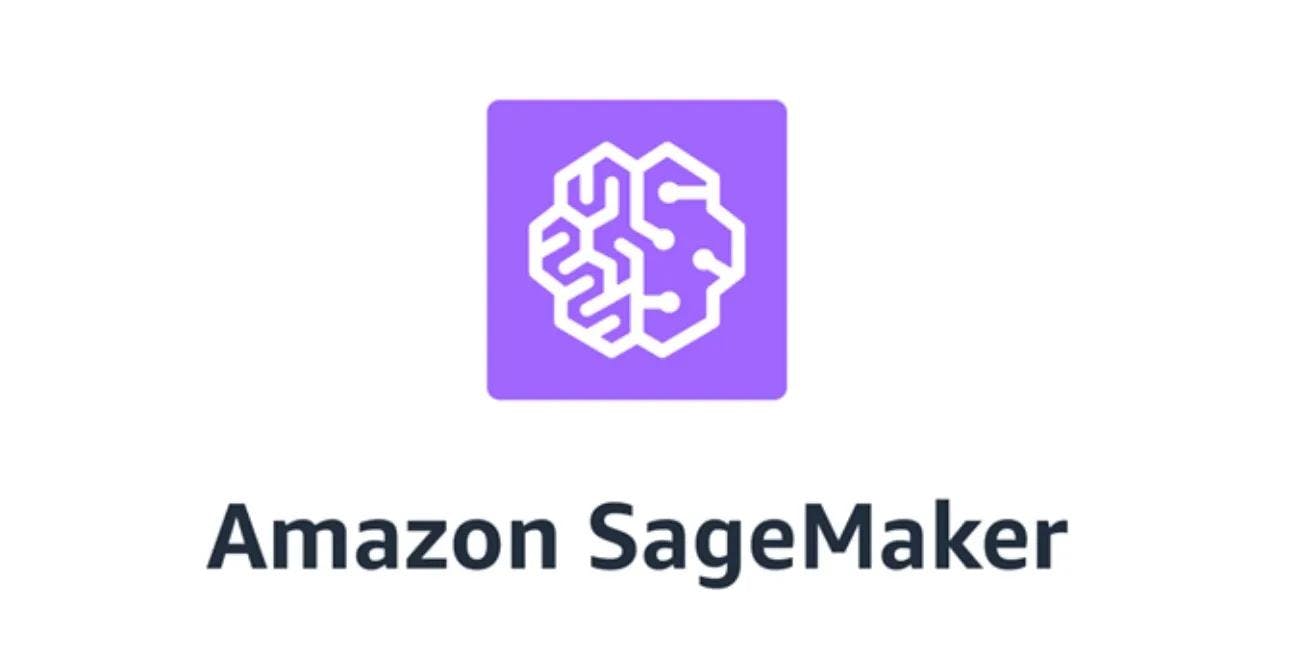
Amazon SageMaker stands out for its comprehensive approach to cloud-based machine learning. Designed with the intention of demystifying the complexities of model building and deployment, SageMaker offers a robust platform that caters to both beginners and experienced practitioners.
With an intuitive interface and a wealth of resources, SageMaker enables users to construct, train, and deploy machine learning models at scale. It allows access to powerful computing resources on-demand, streamlining the process that traditionally demands significant hardware and software configuration. By abstracting and managing these underlying details, SageMaker offers users a seamless experience from model creation to production:
One of the platform's standout features is its broad selection of pre-built templates and algorithms. These accessible starting points cater to common machine learning applications, such as prediction engines or recommendation systems, thus shortening the development timeline and letting users concentrate on fine-tuning models to their specific needs.
Another significant aspect is SageMaker's flexibility in hosting services. Once a model is ready, launching it into a production environment is effortlessly manageable within the SageMaker ecosystem. This seamless transition is a significant advantage for small businesses and entrepreneurs looking to quickly integrate AI capabilities into their operations without the burden of managing infrastructure.
For educators and trainers, SageMaker presents a valuable tool for imparting practical machine learning knowledge. The platform's structured resources and managed services allow learners to experience hands-on AI model building without getting bogged down by the intricacies of coding or system administration.
A testament to its versatility, SageMaker also addresses the needs of seasoned data professionals. The platform supports a Jupyter Notebook interface, familiar to data scientists, for exploratory analysis and model building. This feature ensures that while the platform is accessible to non-coders, it doesn't compromise on the depth required by advanced users:

In essence, Amazon SageMaker is fostering an environment where the creation and integration of machine learning models are more approachable and less time-intensive. It exemplifies the transformative potential of no-code AI platforms by eliminating technical barriers, thus accelerating the adoption of AI across various sectors.
Google AutoML: Simplifying AI for Every Business
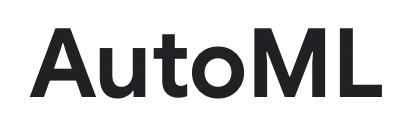
Google AutoML distinguishes itself by making sophisticated machine learning capabilities accessible to businesses of all sizes. Tailored to empower users with limited AI expertise, AutoML employs Google's cutting-edge technologies to facilitate the development of custom machine learning models with unparalleled ease.
AutoML's graphical interface is the gateway for users to interact with AI without getting entangled in coding complexities. It features an innovative drag-and-drop environment, enabling users to build models that can interpret images, comprehend natural language, and analyze structured data with effortless interaction.
Crucial to AutoML's user-friendly philosophy is its focus on automated machine learning. Users can train high-quality models with minimal effort, thereby accelerating their journey from concept to solution. By harnessing transfer learning, where a pre-trained model is fine-tuned with proprietary data, AutoML allows businesses to create tailored solutions that hone in on their specific needs.
The platform's flexibility shines through its broad range of services. AutoML offers specialized tools like AutoML Vision and AutoML Natural Language, each designed to simplify complex AI tasks in their respective domains. For retail businesses looking to improve product discovery, AutoML Vision provides an easy route to develop models for image recognition. Similarly, organizations seeking to extract meaning from text can take advantage of AutoML Natural Language to enhance customer service or streamline document processing.
In educational settings, AutoML serves as an effective tool for trainers to demonstrate the practical applications of AI. Its intuitive interface and automated processes allow educators to focus on teaching the conceptual underpinnings of AI, while the platform handles the intricate aspects of model training and evaluation.
Importantly, AutoML integrates seamlessly with other Google services. This integration amplifies its value, as businesses can readily incorporate AI into existing workflows. For example, a user can connect AutoML with Google Sheets for predictive analytics or embed AutoML models into applications developed on the Google Cloud Platform.
In conclusion, Google AutoML is a standout no-code AI platform that empowers businesses, educators, and entrepreneurs to implement advanced AI solutions. By reducing the complexity of model development and providing a user-centric experience, AutoML is playing a pivotal role in the democratization of AI, enabling every business to capitalize on the benefits of machine learning.
Akkio: The AI Workflow Solution for Teams
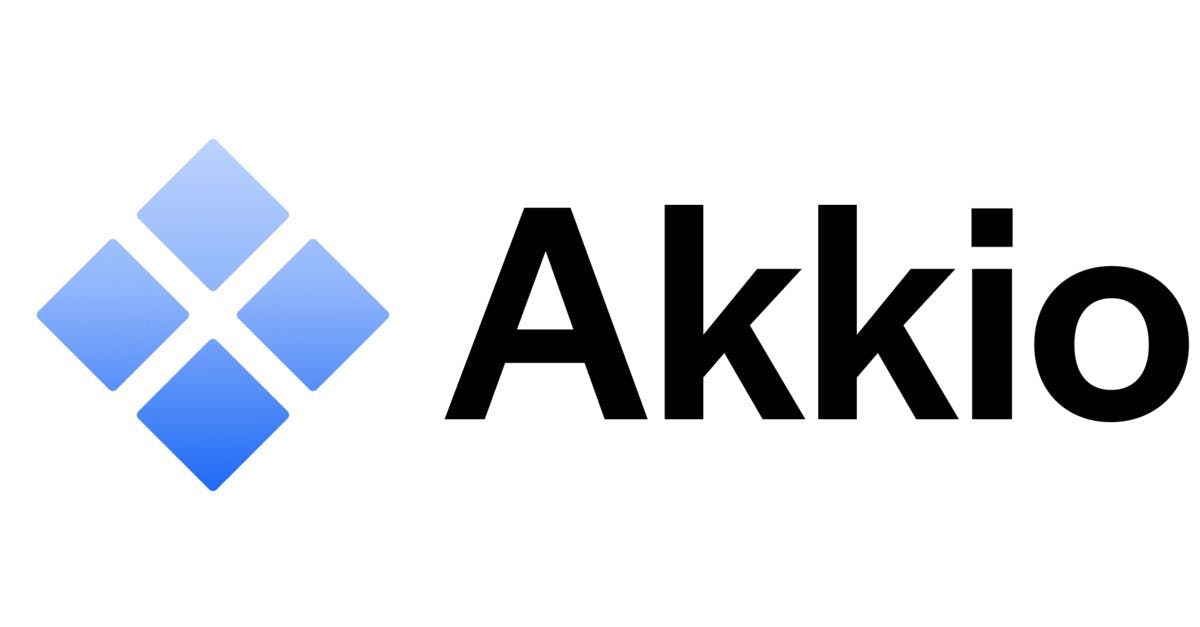
In the landscape of no-code AI platforms, Akkio emerges as a game-changer for businesses seeking to integrate artificial intelligence into their workflows without the complexities typically associated with AI projects. Designed with a focus on practicality and team collaboration, Akkio provides a streamlined experience that transcends the typical barriers of data science.
Akkio champions a user-first approach, combining state-of-the-art machine learning technology with a clear and concise interface. This design philosophy ensures that teams can deploy AI-powered workflows within minutes, transforming raw data into predictive insights. Whether predicting sales trends, identifying potential customer churn, or optimizing marketing campaigns, Akkio equips users with the tools to make data-driven decisions swiftly.
What sets Akkio apart is its commitment to usability. The platform boasts a drag-and-drop interface that allows users to connect data sources, select predictive targets, and build models without any prior coding knowledge. With just a few clicks, marketing professionals, financial analysts, or sales leaders can deploy powerful predictive models that were once exclusive to data scientists.
The collaborative nature of Akkio is another cornerstone of its utility. Team members can share projects, provide feedback, and refine models together, fostering a cooperative environment that is conducive to creativity and innovation. This collaborative spirit is particularly beneficial for small businesses and startups, where agility and teamwork are critical to success.
For educators, Akkio serves as an invaluable teaching tool, allowing students to experience the impact of AI on real-world datasets. The platform's intuitiveness removes the steep learning curve often associated with AI education, making it an ideal resource for hands-on learning and exploration.
It is noteworthy that Akkio's approachability does not compromise on power. Behind its user-friendly facade lies advanced machine learning algorithms capable of handling complex data analytics tasks. The platform's predictive capabilities are not just accessible but also robust, offering a range of applications across various sectors.
In essence, Akkio is reshaping the conversation around AI in the workplace. By providing a no-code solution that teams can adopt quickly and collaboratively, Akkio is not only democratizing AI but also empowering businesses to leverage the full potential of their data. This innovative platform simplifies the AI journey, encouraging teams to embrace the transformative power of machine learning with confidence and ease.
Microsoft Lobe: Image Recognition Made Simple
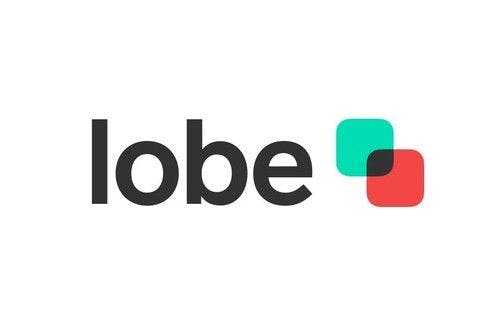
In a world where visual data is king, Microsoft Lobe offers a refreshing take on image recognition with its no-code AI platform. Capitalizing on simplicity and user engagement, Lobe presents an accessible path for individuals and businesses to harness the power of image classification without the need for deep technical expertise.
Microsoft Lobe democratizes AI by allowing anyone to train image recognition models with its intuitive interface. This drag-and-drop environment is particularly inviting for users new to AI, enabling them to create custom models by simply uploading images and tagging them according to their classification. For students and educators, Lobe simplifies the process of teaching and learning AI, transforming abstract concepts into tangible, visual workflows that highlight the power of machine learning.
The platform's simplicity is notably empowering for small business owners and entrepreneurs, who can incorporate AI into their products or services without significant investment in time or resources. From cataloging inventory with image tags to enhancing customer experiences through visual search capabilities, Lobe offers a spectrum of practical applications that can be tailored to the unique needs of various industries.
What Lobe brings to the table is not just simplicity but also sophistication. The tool leverages Microsoft's robust AI framework, ensuring that the models are not only easy to create but also powerful and accurate. This balance of accessibility and performance is a testament to Microsoft's commitment to creating inclusive AI tools that cater to a diverse user base.
Lobe integrates seamlessly with the Azure AI platform for users looking to scale their applications. This integration facilitates a smooth transition from model training to deployment, opening the door to a wider suite of AI services and capabilities available on Azure.
In essence, Microsoft Lobe stands as a beacon in the no-code AI arena, embodying the principles of simplicity and practicality. Its user-centric platform empowers a new wave of AI users, enabling them to build and deploy image recognition models with unprecedented ease. The legacy of Microsoft's innovation in AI continues with Lobe, as it unlocks the potential of image recognition for users around the globe, making AI more approachable and functional than ever before.
RunwayML: Creative AI for Non-Programmers

As artificial intelligence continues to infiltrate the creative industries, RunwayML emerges as a revolutionary force, offering a dynamic no-code platform tailored specifically for artists, designers, and other creatives. This platform dismantles the barriers between AI and the arts, fostering an environment where imagination melds seamlessly with cutting-edge technology.
RunwayML excels at making AI's creative potential accessible to non-programmers. Its straightforward interface invites users to experiment with a diverse collection of AI models that cater to various artistic and design processes. Whether it's generating intricate patterns, enhancing image quality, or even transforming text descriptions into visual art, RunwayML transforms complex AI functionalities into simple, approachable tools.
Central to RunwayML's allure is its extensive model library, which users can tap into without writing code. Creatives can explore and implement models like StyleGAN or BigGAN to bring novel aesthetics and efficiencies to their work, all while fostering a collaborative spirit that is often the lifeblood of artistic endeavors. By enabling the easy integration of these models into workflows, RunwayML serves as a bridge that connects the artistic vision with AI's transformative capabilities.
The platform's commitment to demystifying AI for creatives is evident in its educational offerings. RunwayML provides a wealth of resources and tutorials, aimed at guiding users through their AI journey. From initial experimentation to full-scale project development, the platform ensures that users have the support they need to fully exploit the artistic possibilities of AI.
Beyond individual creativity, RunwayML holds substantial promise for small businesses within the creative sector. The platform's no-code approach allows these businesses to innovate without the overhead of hiring AI specialists. Design agencies, for example, can leverage RunwayML to automate aspects of their creative process, thereby streamlining operations and unlocking new forms of expression for their clients.
In the academic sphere, RunwayML proves invaluable in an educational context, equipping students and educators with the technology to explore the intersection of AI and art. It strips away the intimidation factor of AI, allowing students to engage with advanced techniques in an environment that encourages learning through doing.
In summary, RunwayML stands as a testament to the possibilities that unfold when AI meets creativity. It provides a fertile ground for non-programmers to explore and execute their creative visions with the help of AI, underscoring the platform's vital role in the contemporary art and design scenes. As AI continues to evolve and interweave with various facets of life, RunwayML ensures that creativity remains at the forefront of this technological renaissance.
DataRobot: Automating AI Deployment
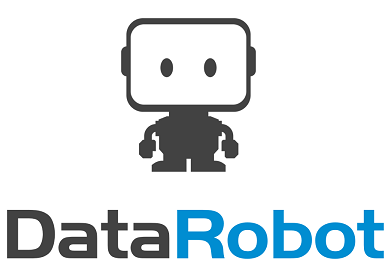
DataRobot stands out in the no-code AI sector as a pioneering platform that simplifies and automates the deployment of machine learning models. It's a platform that caters to both seasoned data scientists and business analysts by offering a streamlined path to transforming raw data into deployable AI models with robust predictive capabilities.
The innovative platform is built with a clear objective: to reduce the time and complexity involved in developing machine learning models. DataRobot achieves this by providing an automated environment where users can feed in data, and the platform takes care of the rest—from selecting the best algorithms to validating model performance. This hands-off approach is especially advantageous for small businesses and startups looking to implement AI without the need for deep technical know-how or dedicated resources.
For educators and trainers, DataRobot presents an opportunity to demonstrate the power of AI in a tangible manner. By eliminating the need for extensive coding or deep statistical knowledge, the platform allows for a focus on the strategic implications of AI, rather than the granular technical details.
The accessibility of DataRobot extends to its integration capabilities. It connects seamlessly with various data environments and applications, making it an adaptable tool that fits into any business ecosystem. Whether it's enhancing predictive maintenance in manufacturing or refining customer segmentation in marketing, DataRobot equips users with AI models tuned to their specific operational contexts.
Behind the user-friendly interface of DataRobot lies a sophisticated infrastructure that supports a broad spectrum of machine learning models and applications. The platform can handle everything from regression tasks to time series forecasting, providing a versatile solution that can grow with the evolving needs of a business.
By prioritizing user experience without compromising on the power of its machine learning engine, DataRobot is not just a platform for automating AI deployment—it's a catalyst for innovation, enabling a diverse range of users to unlock the potential of their data through AI. With DataRobot, the future of AI deployment is not only automated but also democratized, ensuring that the benefits of AI are within reach for everyone.
PyCaret: The Low-Code Python ML Library

Amidst the spectrum of no-code AI tools, PyCaret differentiates itself as a low-code machine learning library that brings advanced analytics within the reach of non-experts. Designed to complement the Python ecosystem, PyCaret stands as a powerful yet accessible gateway to sophisticated data science.
PyCaret's appeal lies in its simplicity and efficiency. It is a library that offers an end-to-end machine learning workflow with just a few lines of code. Users can perform complex data science tasks, from data preparation to model deployment, all within a unified framework. This streamlined approach is particularly appealing to small businesses and entrepreneurs who may not have extensive resources for data analysis but still wish to leverage the predictive power of machine learning for informed decision-making.
Educators will find PyCaret an effective resource for introducing students to the world of machine learning. The library's low-code environment minimizes the initial barriers to entry, providing a practical learning experience that emphasizes the application of AI concepts over coding intricacies. With its comprehensive documentation and active community, PyCaret supports an educational journey from theoretical understanding to practical implementation.
As a testament to its versatility, PyCaret integrates with other Python-based tools and systems, allowing for seamless adoption into existing processes. It is this adaptability that enables PyCaret to serve a wide range of analytical needs, from financial forecasting to customer segmentation. The library's modular design means that users can easily customize their machine learning pipeline to suit specific project requirements.
Behind PyCaret's intuitive interface is a robust suite of algorithms and pre-processing techniques. Users can experiment with different models, compare results, and fine-tune their approach to achieve the best outcomes. The result is a tool that democratizes data science, putting the capabilities of machine learning in the hands of those who stand to gain the most from its insights.
In essence, PyCaret is more than just a low-code option for machine learning; it is a facilitator of data-driven transformation. It empowers a diverse range of users to tap into the potential of their data, igniting a culture of innovation that thrives on accessible AI. With PyCaret, the journey from data to insight is not only simplified—it's accelerated, paving the way for advancements that redefine what is possible with AI in the Python landscape.
Summary
The accelerating shift towards no-code AI tools signals a transformative chapter in the democratization of artificial intelligence. These platforms represent a bridge between the complex world of AI and a diverse user base, including those without technical expertise. By equipping individuals with intuitive and powerful tools, AI is now within reach of anyone seeking to harness its capabilities for innovation, problem-solving, or creative expression.
The future of AI promises to be inclusive and deeply integrated into various aspects of life and work. We anticipate the continued growth of no-code platforms, which will become more sophisticated while maintaining their user-friendly appeal. These systems will likely become embedded in everyday software, thus becoming a seamless part of the fabric of our digital interactions.
Predictive analytics will remain at the forefront of AI applications, with platforms such as DataRobot leading the charge in making sophisticated forecasting accessible and actionable. The creative sector will also witness a notable expansion in AI applications, with tools like RunwayML pioneering new forms of artistic expression.
Equally important, the ethical dimensions of AI will receive heightened attention, ensuring that these powerful technologies are leveraged responsibly and with respect for privacy and fairness. In the educational sphere, AI tools will continue to revolutionize teaching methods and learning experiences, making complex concepts approachable and engaging.
